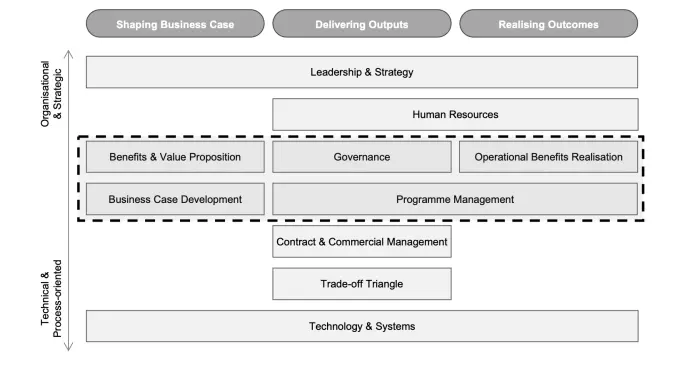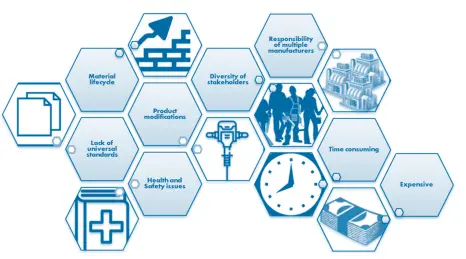Effective stakeholder collaboration is crucial for project success. Comprehensive Assignment Help for Better Grades ensures in-depth guidance on construction management, regulatory compliance, and risk assessment strategies.
The construction industry in the UK is referred to by its strong nature with the effective relationship of various stakeholders to attract different projects to accomplishment. The success of the construction project is crucially interconnected with relationships of different stakeholders and the role of various stakeholders such as architects, contractors, several regulatory organizations, engineers, and many more. In effective project management, ensuring the effectiveness of workers by reducing different issues related to health and safety is the most important aspect of the building and civil engineering contractor sector in construction management in the UK. To gain success by incorporating the collaboration of stakeholders, the contribution of every key stakeholder is very crucial in outlining the success in the development of different projects. Various stakeholders such as architects and designers can conduct design at an expertise level that secures every perspective to meet various requirements. On the other side, the contractor accomplishes the design, managing different complexities in the construction, reorganizing different functions, and many more practices for developing the outcome. The role of different regulatory bodies is also crucial. Regulatory bodies such as health and safety executives with various local entities serve necessary supervision to secure different compliances with important regulations and standards.
This assessment highlights relevant procedures regarding collaboration and alignment of several interests among stakeholders of the building and civil contractor sectors are important for the development of the construction project. With the help of constructing this assessment, the importance of every stakeholder group and the significance of effective communication were assessed. This assessment also signifies various perspectives related to effective communication, mutual acknowledgment, and different relationships among stakeholders to mitigate every obstacle in project management.
Get assistance from our PROFESSIONAL ASSIGNMENT WRITERS to receive 100% assured AI-free and high-quality documents on time, ensuring an A+ grade in all subjects.
Different Types of Projects
The building and civil engineering contractor sector in the United Kingdom incorporates a diverse extension of projects, highlighting rich heritage in the architectural domain, and signifying constructional demand with emerging urban landscapes (Papachristos, et al. 2020). These construction projects can be widely classified into several segments such as residential, construction, environmental, and commercial segments.
Residential projects
These projects have a worldwide extension and vary from single-family houses to extensive development of construction. With the background of rapid growth of population and urbanizing aspects, the demand for innovative ideas, advanced, sustainable with reasonable solutions in making houses has introduced a diverse range of construction projects including high emerging apartments, skyscrapers, mixed utilized construction, townhouses, and many more.
Commercial projects
In these projects, the infrastructure of different office buildings, and various retail layouts with the establishment of a hospitality segment is a very important segment. The commercial construction domain is controlled by several trends such as the design of the working environment, and sustainability with the integration of technology (Ellis, et al. 2021). Advanced official infrastructure prioritizes the effectiveness of energy consumption, flexible working environment, and smart construction technology to link the emerging necessities related to businesses.
Constructional projects
These projects play a crucial role in linking different communities and incorporating financial growth. Different fundamental transportation initiatives like the enlargement of the railway sector, the upgradation of roadways, and the improvement of airports are important to this infrastructural domain (Jang, and Collinge, 2020). The government of the UK is committed to developing connectivity by minimizing carbon reduction in the development of sustainable solutions with electrified and advancing railway networks and generating cycling construction.
Projects of civil engineering
These projects also incorporate different management such as water and wastewater management with initiatives of developing water supply, food conservation, and sewage management. With the help of SuDS or a sustainable urban drainage system, projects are rapidly integrated. These projects also play a crucial role in managing precipitated water runoff and improving different environmental flexibility.
Environmental projects
In the UK, the development of environmental projects highlights the necessity for sustainable enhancement and climate flexibility. This involves different workings such as green sustainable construction, eco-friendly design, and upgradation of non-conventional energies. This signifies the reduction of carbon emissions has led the energy-efficient infrastructure development and the incorporation of several sustainable technologies.
Whether you’re working on project planning, risk management, or stakeholder analysis, our project management assignment help offers expert solutions for every aspect of project management.
In the aspect of building and civil engineering contractor segment in the United Kingdom, several key holders such as design experts and contractors play beneficial role in securing the success of construction projects.
Residential improvement
In the context of design professionals, architects are accountable for developing overall design by making relevant designs related to residential infrastructure. Graceful appeals, functionality with establishing several compliances, and integrating different regulations are important aspects here. The role of design expertise is relevantly interconnected with the coordinator and other professionals to secure the practicality of the vision of the design. Structural engineers also have a great contribution to the construction of residential environments (Ahmed, and Sobuz, 2020). These stakeholders secure the integrity of infrastructure. These professionals are connected with architects to outline the foundations, establish load-bearing components, and design infrastructural procedures. The expertise of these stakeholders is crucial to reduce constructional obstacles in the pre and post-construction segment. General contractors are accountable for developing overall project construction, this stakeholder observes the entire construction procedure accurately. They collaborate with subcontractors to manage schedules, and time management and secure the budget affordability of the project (Newman, et al. 2021). The contribution of general contractors is important in cooperating between different design expertise, and subcontractors with customers. Other subcontractors such as plumbers, electricians, and many more are some important stakeholders who tackle specific contexts in the aspect of construction procedures. Plumbers, electricians, and other stakeholders play significant roles in securing different compliance of the projects with implementing safety regulations in the project with incorporating different regulations.
Infrastructure projects
To conduct different infrastructure projects, civil engineers concentrate on the layout of the infrastructure projects. These stakeholders conduct different strategies and design roads, bridges, and drainage systems. The responsibility of these stakeholders included monitoring several concerns regarding the environment and congestion management and agreement of different regulatory initiatives of the government (Iacovidou, et al. 2021). Geotechnical engineers examine soil conditions and implement a layout related to the infrastructure appropriate for the project. Input from this professional is beneficial for securing different safety measures related to construction specifically in different landscapes with diverse geological attributes (Young, et al. 2020). Earthwork engineers play a crucial role by implementing excavation, and grading with several earthmoving functions to prepare the construction site for ensuring different construction phases. These workers play an important role in outlining the area and ensuring it meets the specifications of the projects.

Figure 1: Model of owner challenges
The role of a construction manager is beneficial in the aspect of effective completion related to the infrastructure and civil engineering projects in the United Kingdom. The accountability of these stakeholders extends over different segments such as planning, collaboration, execution of different functions, securing time management, and budget management based on specific standards of quality. Construction managers are accountable for different procedures related to the cost budget, price estimation, and managing several resources effectively (Smith, et al. 2023). These stakeholders play an effective role in controlling costs, and assuring that the project stays within a specified budget. In the aspect of time management, construction managers introduce comprehensive schedules related to projects, shape different tasks, accomplish various milestones, and manage relevant timelines. This expertise is also accountable for advancing the construction sequence to reach the deadlines and consider for potential delays (Raiden, and King, 2021). To link with different coordination and enhance communication, these professionals introduce diverse groups of workers and expertise. They magnified different relationships among team members to keep a strong and effective working environment. Construction managers also play a critical role in making healthy connections between clients and project groups. These stakeholders serve day-to-day updates and signify various concerns with securing to reach the expectations of clients.
In construction management, safety is one of the fundamental concerns, and construction managers introduce and implement different safety standards on site. Collaborating with other stakeholders with safety professionals and securing the safety of all working forces is a relevant role for construction managers by implementing safety guidelines (Winch, and Cha, 2020). These managers are also interconnected with different negotiation practices with different contractor’s subcontractors and resource suppliers. By implementing different practices, these stakeholders secure fair contracts, making projects legally clear and aligning different perspectives.
The construction industry in the United Kingdom has a comprehensive list of regulations that secure the safety, quality of project management, and sustainability of infrastructure-making projects. These regulations incorporated several perspectives including health and safety measures, developing codes, enforcing different environmental standards, and implementing contractual agreements (Sánchez-Segura, et al. 2021). Acknowledging and assessing these regulations is beneficial for all stakeholders that are included in the building and civil engineering contractor segment.
Health and safety regulations
To ensure health and safety measures in construction sites, the Act of Health and Safety Work, 1974 indicated different general duties related to employers, stakeholders, and others to secure health and safety measures in the working environment. With these regulations, in the construction industry. Different compliances including the assessment of various challenges, different training for safety purposes, and implementing provisions related to individual protective instruments are very important aspects. Construction and Regulations of 2015 on design and management concentrate on managing health, security, and effectiveness in developing the working force during the lifecycle of construction projects (Onubi, et al. 2022). These regulations highlight different key roles in the context of principal designer and contractor that highlight different connections and communication to develop safety in the working environment. Building Act 1984 is also a very significant act that signifies a legal outline for developing different regulations in the United Kingdom.

Figure 2: Criteria suggested for the development of EPR policy
Implementing these regulations marked a standard for the design and infrastructure of the construction to secure safety and accountability with energy effectiveness. Building Regulations 2010 serves as detailed necessities for several perspectives related to construction regarding stabilization in construction, fire safety measures, and generating ventilation with approachability. Different compliances with infrastructure regulations are compulsory in the UK and failure to meet these compliances can make an outcome related to penalties or different legal conclusions (MD, and Mahesh, 2023). Regulations based on EIA are also crucial here in the aspect of constructing larger buildings or skyscrapers. For constructing mega projects, the “environmental impact assessment” is needed to assess several effects related to the potential environment. This assessment observes that these mega projects ensure different environmental concerns. Waste management regulations regulate different activities in the aspect of managing construction waste, encouraging recycling, and minimizing the environmental effects related to the construction functions. Due to different contractual regulations, the Construction Act of 1996 highlighted different procedures and arguments resolutions in different construction contracts. This act also aims to secure fair payment aspects in different practices and serve mechanisms for mitigating different disputes in project management (Mahmoudi, and Keashly, 2021). Different joint contracts tribunals with NEC are considered standard forms related to the construction contracts that are widely utilized in the United Kingdom in the context of different commercial project management.
The contribution of a construction manager is crucial is to securing different compliance with several regulations specifically in the aspect of health and safety in the commercial construction sector in the UK. The dependability of the construction manager is supervising different implementations to meet regulatory necessities, and managing several challenges while forming a culture of safety within commercial project management. In the aspect of assessing and interpreting to ensure compliance, construction managers need to acknowledge of regulations specifically health and safety measures of workers, developing codes and different contractual agreements (Karanikas, and Hasan, 2022). Construction managers are accountable for maintaining different comprehensive assessments that highlight various compliances with safety regulations.

Figure 3: Main challenges related to EPR policy
Different types of work such as maintaining records related to safety gatherings, training sessions, observations, and any divergences from the main project secure transparency and dependability are beneficial for project management. Construction managers cooperate with several regulatory bodies to facilitate various observations and deliver specific documentation highlighting several concerns that are highlighted by regulatory inspectors. Construction managers make sure that all parties including different stakeholders, agree on different contractual agreements with obligations. Construction managers also observe various implementations regarding health and safety measures to secure overall plans and work to reach different developing regulations and examine different aspects to meet the deadline.
Construction managers also develop different risk assessments on numerous phases related to the projects assessing various potential hazards and implementing different practices to reduce different issues. Construction managers are involved actively in examining different constructional calamities and making relationships among different stakeholders to build strategies to prevent several risks. In the context of reducing health and safety risks, this professional plays a crucial role in forming comprehensive health and safety strategies for the project. In this strategy, different protocols are important where hazards are highlighted, emergency response assessed and the usage of PPE is a very significant aspect here. In the context of developing training and education, construction managers make sure that all working forces get proper health and safety training to prevent construction risks. Generating training sessions on a regular basis also highlights various challenges connected with projects and managers examine that the working force acknowledges and follows every safety measure.
Conclusion
After angling all aspects it can be concluded that an efficient construction project depends on the engagement and collaboration of the stockholders in each and individual stage. This is one of the most important and essential factors that need to be considered. Through forecasting channels of communication and justifying expectations and the important goals the stakeholders can give their contribute to the success factors of the project. Involvement and connections with the process of decision-making from the final executions of the internal strategies just not only upgrade the efficiency of the project it also develop accountability and ownership sense. An efficient management process plays a most important and essential role in a business. Through an efficient management process, they can able to chase the success goals and also able to rectify the business issues. An efficient management process also helps to maintain the business health appropriately, it also protects the business from the internal and external risk factors. The managers are able to maintain the business appropriately by implementing the risk assessment protocols, appropriate training, and safety of the cultures. This is one of the most important and essential factors that concluded from the whole project. Regular auditing and proactive approves help to identify the potential issues of the business, this is another essential technique that is used by the managers to maintain the business process appropriately and perfectly. This effect management technique plays a crucial role in the business process through implementing this efficient process the managers are allowed to solve the errors of their business and also able to chase the success goals.
Reference list
Journals
Introduction: Leadership and Change management Get free samples written by our Top-Notch subject experts for taking online...View and Download
Introduction Get Free Online Assignment Samples from the UK's Best Assignment Help Experts to boost your academic...View and Download
Introduction Get Free Online Assignment Samples from UK's Best Assignment Help Experts to boost your academic...View and Download
Introduction Get free samples written by our Top-Notch subject experts for taking online Assignment...View and Download
Introduction Don’t let assignments stress you out! Our affordable online assignment help experts are here to provide...View and Download
Introduction Get free samples written by our Top-Notch subject experts for taking online Assignment Help services. As...View and Download
Copyright 2025 @ Rapid Assignment Help Services
offer valid for limited time only*

